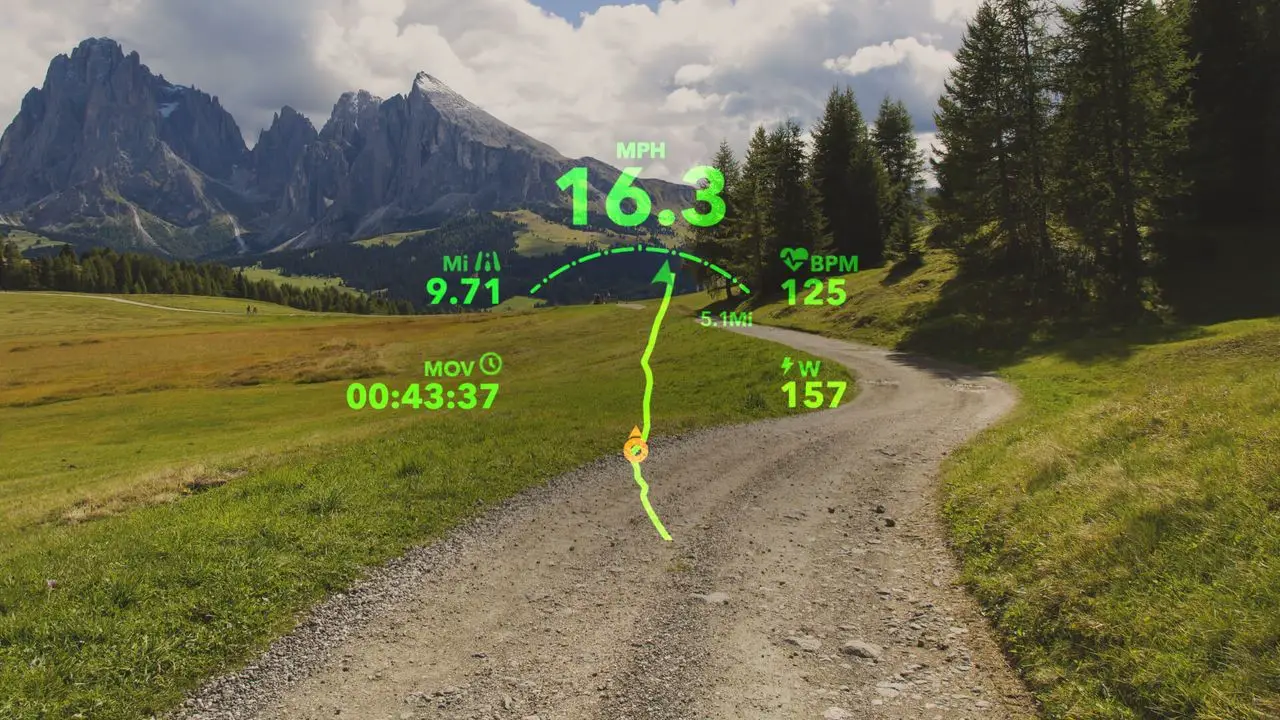Many of us head to the gravel roads or mountains to get away from screens, technology and the stresses often associated with them. But could a high-tech pair of shades make a case to become essential equipment that enhances your off-road rides or cyclocross training? We swapped out our normal sunglasses for a pair of Everysight Raptor augmented reality glasses to find out.
Augmented Reality, Out in the Real World
Everysight is not new to the augmented reality world. The team behind Everysight has developed helmet-mounted displays for fighter pilots for the past quarter century.
In recent years, Everysight has worked to bring military-grade displays to the recreational market. The new Everysight Raptor augmented reality glasses brings that heads-up display technology to cyclists. We first saw a prototype of the Everysight Raptor glasses at Press Camp last year, where we got to take the glasses for a brief test spin.
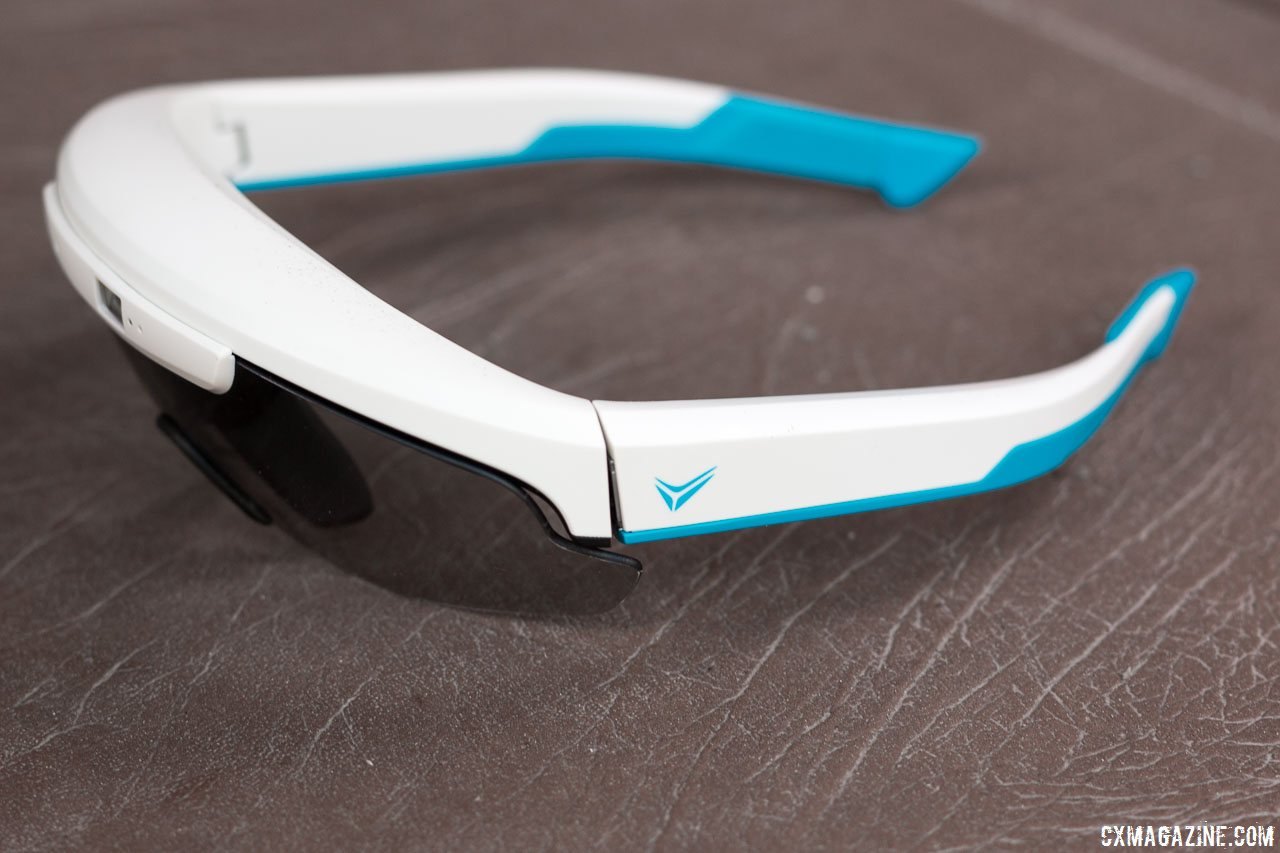
Last year at Press Camp, we saw a demo version of the Everysight Raptor glasses. Press Camp 2017. © Cyclocross Magazine
If you watched the Tour de France this year, you may have seen the Raptor glasses in action thanks to Christian Vande Velde.
The augmented reality glasses are now available to the public, and we recently received a loaner pair to test out for ourselves. We’ve taken the Raptor glasses out for rides on pavement, gravel roads and even some trail to see how the heads-up display with ride data helps enhance our riding and training.
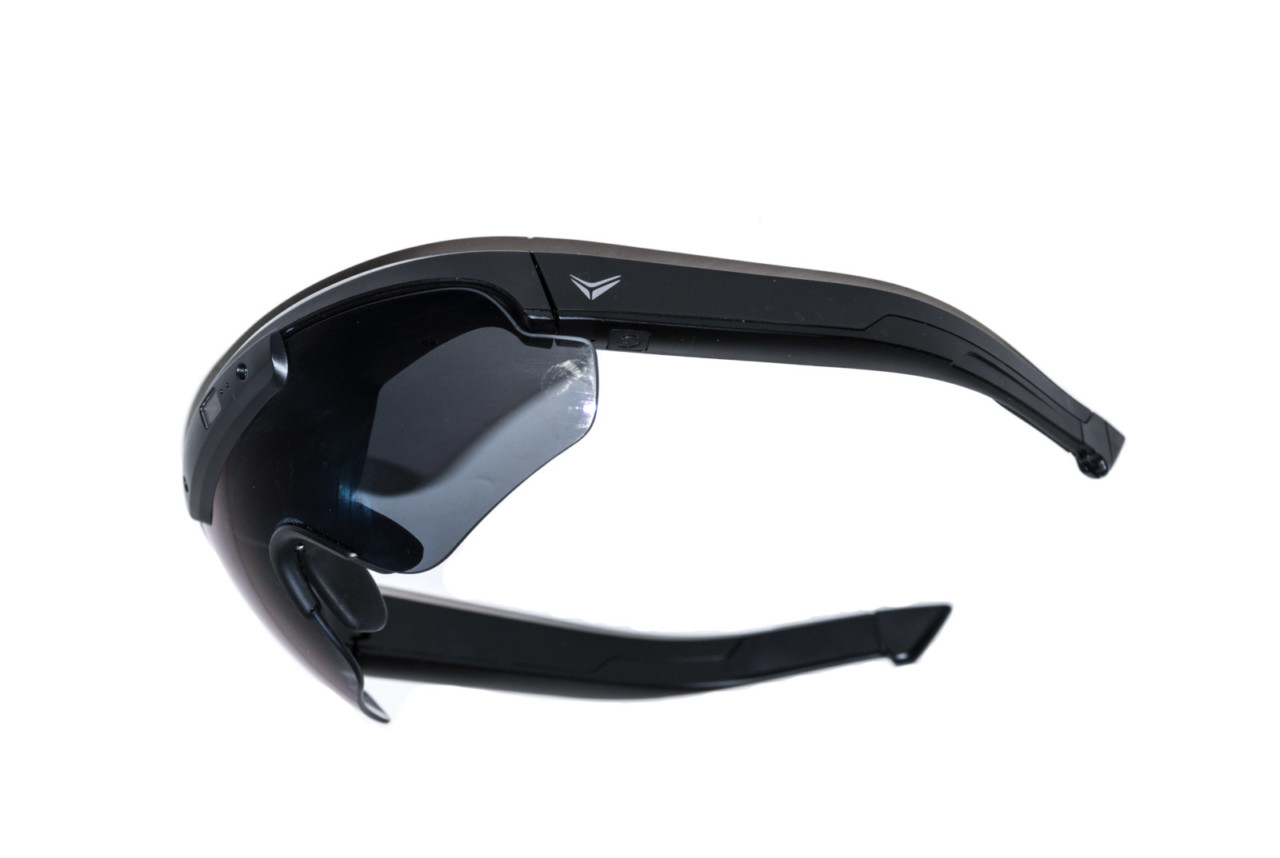
The Everysight Raptor glasses are now available for a release price of $500. Everysight Raptor Augmented Reality Glasses. © C. Lee / Cyclocross Magazine
The Raptor Display and Electronics
The Everysight Raptor is the first pair of augmented reality glasses to integrate data directly into the display. An OLED projector projects visuals onto a half-mirrored screen on the glasses lens. This provides an infinity-focused display in the user’s field of view. Many of us dream of seeing our cyclometer data during conditions when we could not take our eyes off the road or trail, and the Everysight Raptor makes that a reality.
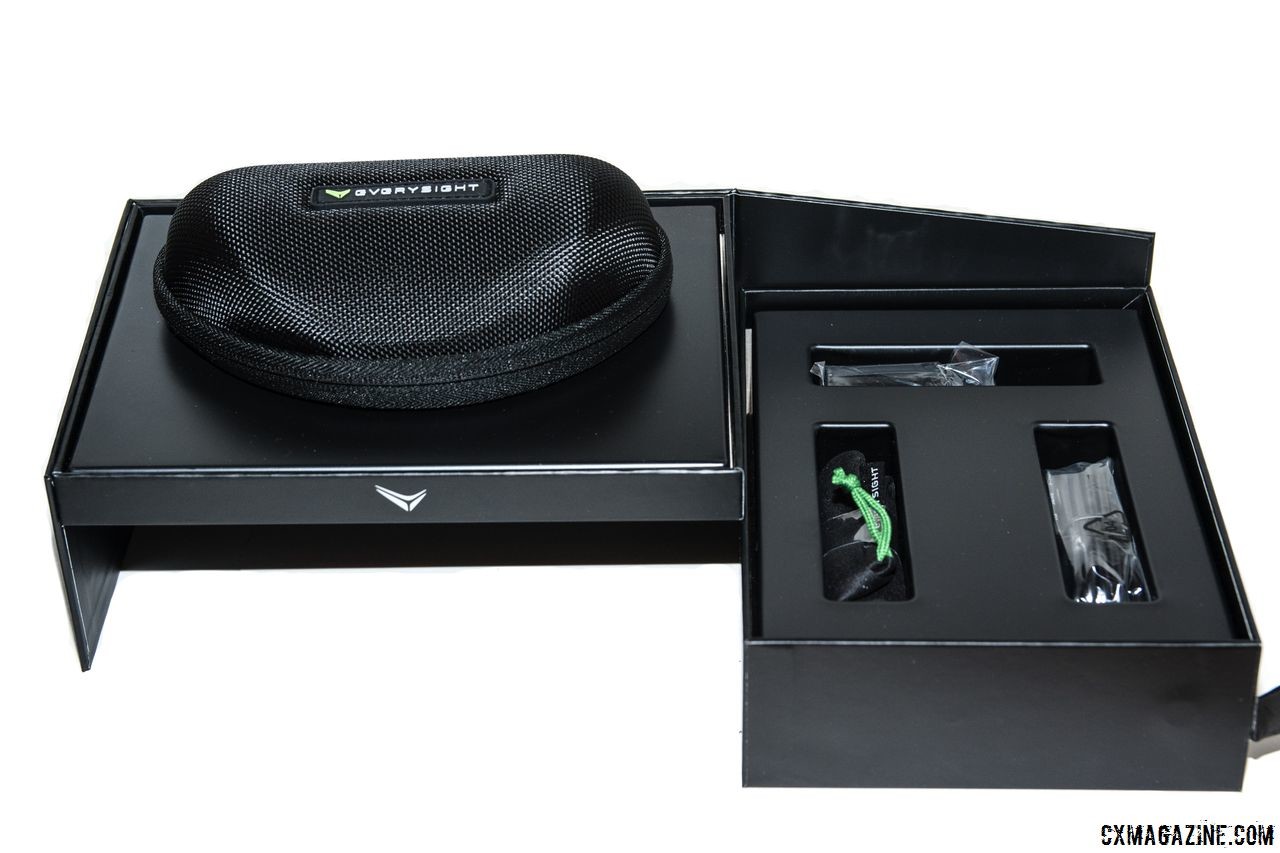
The Raptor comes packaged with a hard case, soft bag and micro USB cord. Everysight Raptor Augmented Reality Glasses. © C. Lee / Cyclocross Magazine
The electronics of the Raptor are in the brow bar with the power and controls in the temples. With this design, the brow bar is almost 3cm thick, and the temples are 1cm thick. That pushes the lens outward, so it slants back towards the face at an aggressive angle to meet your cheeks and close up the space. It sounds odd, but remember that your helmet protrudes forward of your forehead about the same amount, so when wearing the Raptor glasses with your helmet, it looks fairly integrated.
The glasses come in three colors: Stealth Black, Electric Green and Arctic Blue. Our test pair was the Stealth Black option.

Even though the Raptor glasses extend away from the face, they integrate with a helmet relatively seamlessly. Everysight Raptor Augmented Reality Glasses. © C. Lee / Cyclocross Magazine
The OLED projector is on the right side of the brow bar and projects onto a half-silvered portion of the lens. When you wear the glasses, you see a display that appears in your field of view, superimposed on whatever you’re looking at. It sounds distracting, and initially it is primarily because it’s so novel to have data in your field of view. You can adjust the position of the display in your vision during set-up, along with the position of the glasses themselves with an adjustable nose piece that can accommodate for wide, narrow, high or low nose bridges.
You can customize the display to an extent to display various combinations of data such as speed, distance, cadence, power, heart rate. One feature that is likely useful for gravel riding is its ability to display a map. The map was useful when out in the boonies and a bit of a distraction in town, so it is definitely more suited to rides on remote gravel roads than finding your way around town.
Controls on the weather-resistant glasses are via swipes and taps along the right temple, which is an intuitive system to learn and use. That swiping motion, whether up, down, forward or back allows navigation through the features, and once learned can allow changes in data fields, taking of pictures or videos on the fly, playing of music or adjusting the display.
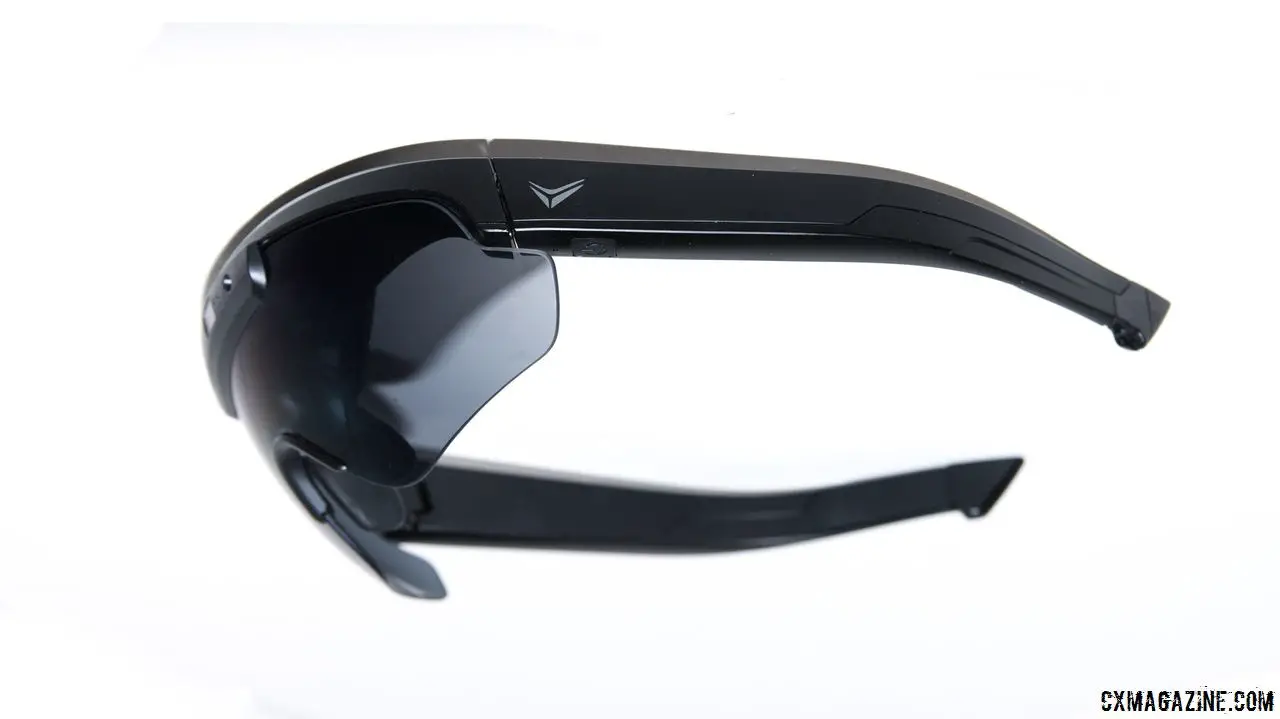
The electronics are in the brow bar and the controls in the temple. Everysight Raptor Augmented Reality Glasses. © C. Lee / Cyclocross Magazine
The glasses house electronics that include an Android operating system with 2 GB SDRAM and either 16 or 32 GB of memory. It has ANT+, Bluetooth and WiFi connectivity with built-in GPS. With that connectivity, you can pair with power sensors, heart rate monitors, cadence or speed sensors and of course, your phone.
With the Raptor tethered to your phone via Bluetooth, you can receive text messages in the display as they come in. When tethered to a smartphone, it can either use the phone’s GPS or its own internal GPS. Faster GPS acquisition occurs utilizing the phone GPS, thanks to cellular data, but your phone battery drains faster.
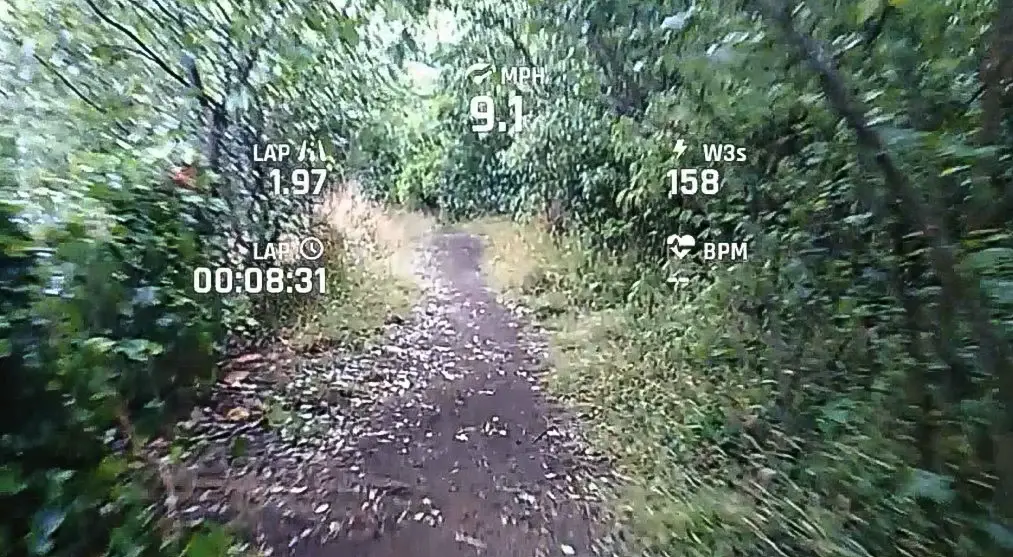
The heads-up display on the Raptor displays information while still letting you focus on the task at hand. Everysight Raptor Augmented Reality Glasses.
Music downloaded to the Raptor plays through a small built-in speaker that sounds tinny, though some users might be less discerning about the sound quality of their in-ride tunes. There is a 13 MP camera built into the front of the glasses for video or still photos, with selectable resolution depending on your desire.
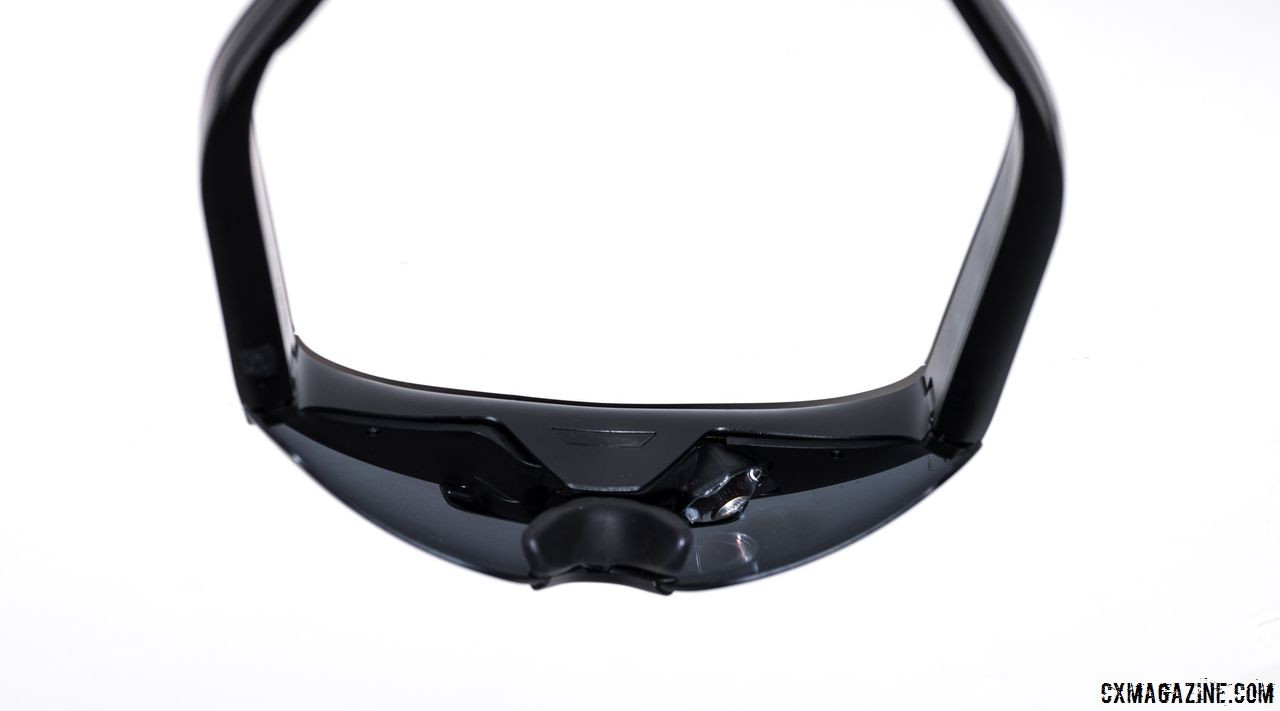
The backside of the glasses has a sensor to turn the display off. The projector is on the right side above the adjustable nosepiece. Everysight Raptor Augmented Reality Glasses. © C. Lee / Cyclocross Magazine
It takes some practice to navigate through all the features, and with only a handful of rides, I’m still learning. Everysight has online tutorials that are helpful, and the display menus are intuitive.
The lithium battery in real-world testing offers approximately eight hours of run time. The weight of the Raptor is 100 grams. As a comparison, a pair of Oakley Jaw Breakers sunglasses weighs 35 grams, but there is a lot of electronic gadgetry in that remaining 65 grams.
The Raptor glasses are currently available at a special launch price of $500, and their regular MSRP is $650.
The Lenses
The shield-type lenses are interchangeable and available in several tints. For prescription wearers, there is a prescription insert available.
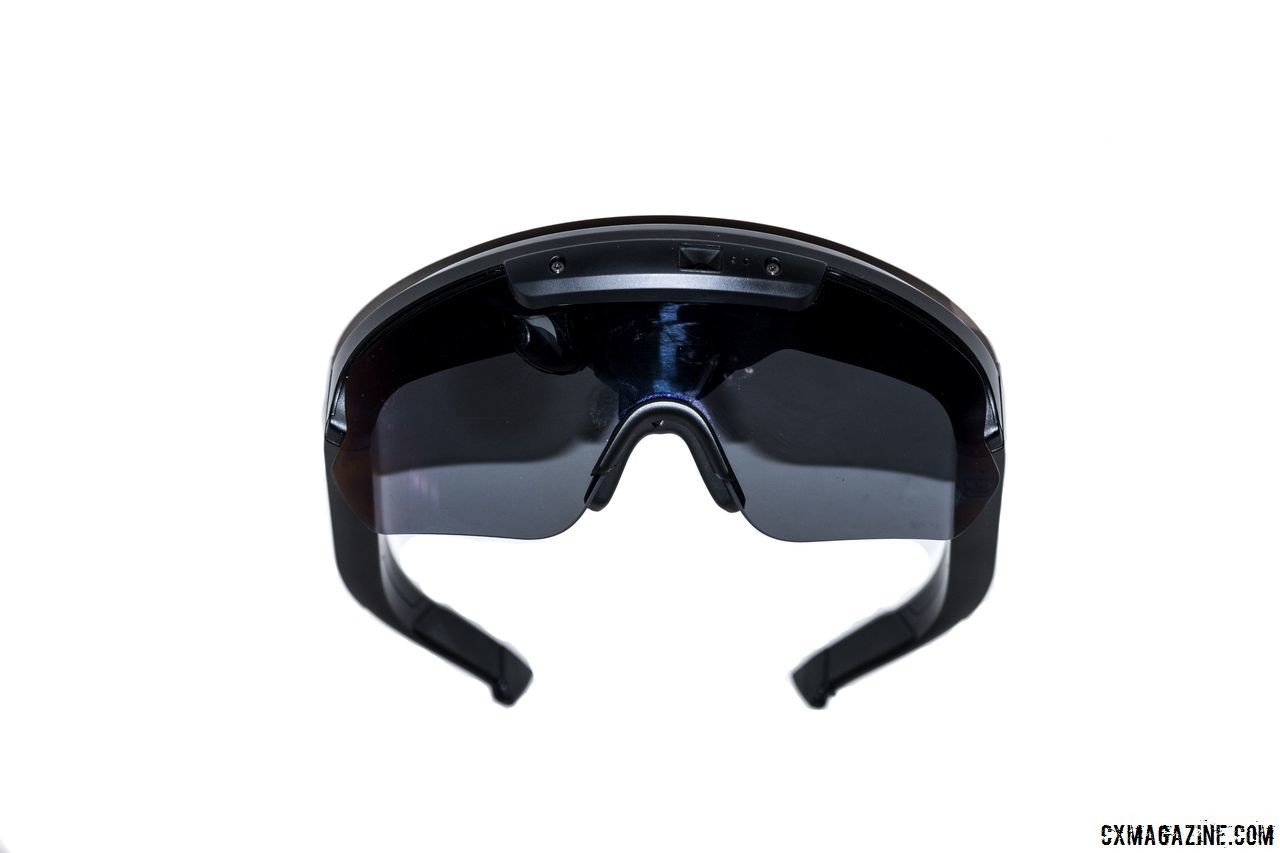
Everysight provides interchangeable tinted lenses and inserts for prescription lenses. Everysight Raptor Augmented Reality Glasses. © C. Lee / Cyclocross Magazine
Our review pair of the Raptor came with a grey-tinted lens that has an anti-reflective coating on the front surface. The optical properties of the lenses are very good and distortion-free in my optometrist projector test. The weight of the glasses and fit with my helmet take some fiddling, and I think using a retention strap would help, though that would make putting the glasses on a bit more cumbersome.
The display distracted me during my first ride, but that’s why the tutorial recommends a very short ride with the Raptor glasses when you first use them. I found turning down the brightness was significantly helpful, and with each subsequent ride, I spent less time looking at the data display, only checking it when I wanted to see how much power I was generating or how fast my descent actually was.
The Verdict
The Everysight Raptor augmented reality glasses are an impressive product with a range of capabilities thanks to its use of the Android platform. This open platform allows future app development for the Raptor. The display is infinity-focused or close to it, so it requires no change in eye focus, only mental focus.
The raptor shows all the data I usually want from my current cycle computer—a Garmin 820—except for percent grade and temperature. You can even upload .gpx and .tcs files for turn-by-turn directions via a speaker while recording video of your ride with the data displayed.
The eight-hour power limit will not get you through the Dirty Kanza 200, but you can use the USB cord to plug the glasses into an external battery pack stored in your jersey pocket and keep on going. During a long ride, the glasses weight will become a burden, but a glasses tether such as a ChumsⓇ or CroakiesⓇ can help.
The Raptor’s greatest potential is likely for time trials and during interval training where monitoring data during maximum effort is advantageous. For cyclocross, having readily available data will likely lead to a trip through the course tape, while the heads-up map display can be a benefit for gravel rides shorter than a DK200 epic, especially if you have to do your own navigation in the boonies.
The biggest drawbacks of the Raptor are its size and weight and $500 cost. However, if you are an early adopter of cycling technology, the Raptor is likely worth a look.

The Everysight glasses add about 60 grams compared to a regular pair of sunglasses, but they do not look much different. Everysight Raptor Augmented Reality Glasses. © C. Lee / Cyclocross Magazine
Everysight Raptor Glasses Specs
Cost: $500 (launch price); $650 (regular price)
Weight: 100g
Battery Life: Eight hours, lithium battery
OS: Android
Connectivity: Ant+, Bluetooth, Wifi; Built-in GPS
Lenses: Interchangeable, Prescription inserts available
More Info: everysight.com













